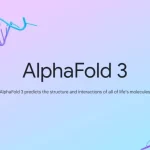
EfficientBioAI: An Open-Source Toolbox for Energy-Efficient AI in Bioimaging
February 6, 2024Researchers at the Leibniz-Institut für Analytische Wissenschaften (ISAS) and Peking University have introduced EfficientBioAI, a user-friendly toolbox designed to compress existing bioimaging artificial intelligence (AI) models, enabling faster and more energy-efficient image analysis. The study highlights the increasing computational overhead and energy consumption associated with complex AI models in bioimaging, emphasizing the need for efficient solutions. Here are the key points from the research:
- Motivation:
- AI-based microscopy image analysis tools have evolved rapidly, but the increasing complexity of models has led to higher network latency (inference time) and elevated energy consumption.
- The study aims to address the efficiency, particularly latency and energy efficiency, of bioimaging AI models.
- EfficientBioAI Toolbox:
- The researchers created the EfficientBioAI toolbox, a free compression software that enables scientists to run existing bioimaging AI models with reduced latency and significantly lower energy consumption.
- The toolbox employs model compression techniques, such as pruning, to reduce computations in AI models while maintaining comparable prediction accuracy.
- Model compression aims to make AI models lighter and more energy-efficient.
- User-Friendly Features:
- EfficientBioAI is designed as a ready-to-use and open-source compression software for AI models in the field of bioimaging.
- It offers customizable functions, including adjustable compression levels and seamless integration into existing PyTorch libraries.
- The toolbox supports standard use but also provides options for researchers to make specific changes to address their requirements.
- Performance Testing:
- The researchers tested the software on several real-life applications with different hardware and various bioimaging analysis tasks.
- Compression techniques applied by EfficientBioAI significantly reduced latency and cut energy consumption by 12.5% to 80.6% in various scenarios.
- Energy Savings Example:
- Using the commonly used CellPose model as an example, the researchers illustrated potential energy savings. If a thousand users applied EfficientBioAI to compress the model and analyze a dataset, they could save energy equivalent to the emissions of a car journey of around 7,300 miles.
- Accessibility and Integration:
- EfficientBioAI is designed to be accessible to scientists in biomedical research. It can be installed and seamlessly integrated into existing PyTorch libraries, with support for specific change requests.
- For widely used models like Cellpose, researchers can use the software without code changes. The toolbox also provides demos and tutorials for guidance.
- Ongoing Development:
- The researchers are continuously developing the toolbox and plan to make it available for MacOS in addition to Linux (Ubuntu 20.04, Debian 10) and Windows 10.
- The focus is on improving inference efficiency of pre-trained models, rather than increasing efficiency during the training phase.
EfficientBioAI offers a practical solution for scientists in bioimaging to enhance the efficiency of neural networks, reduce latency, and save energy without compromising model accuracy. The toolbox addresses the growing need for energy-efficient AI solutions in the field of microscopy image analysis.
More information: Yu Zhou et al, EfficientBioAI: making bioimaging AI models efficient in energy and latency. Nature Methods (2024). www.nature.com/articles/s41592-024-02167-z


















